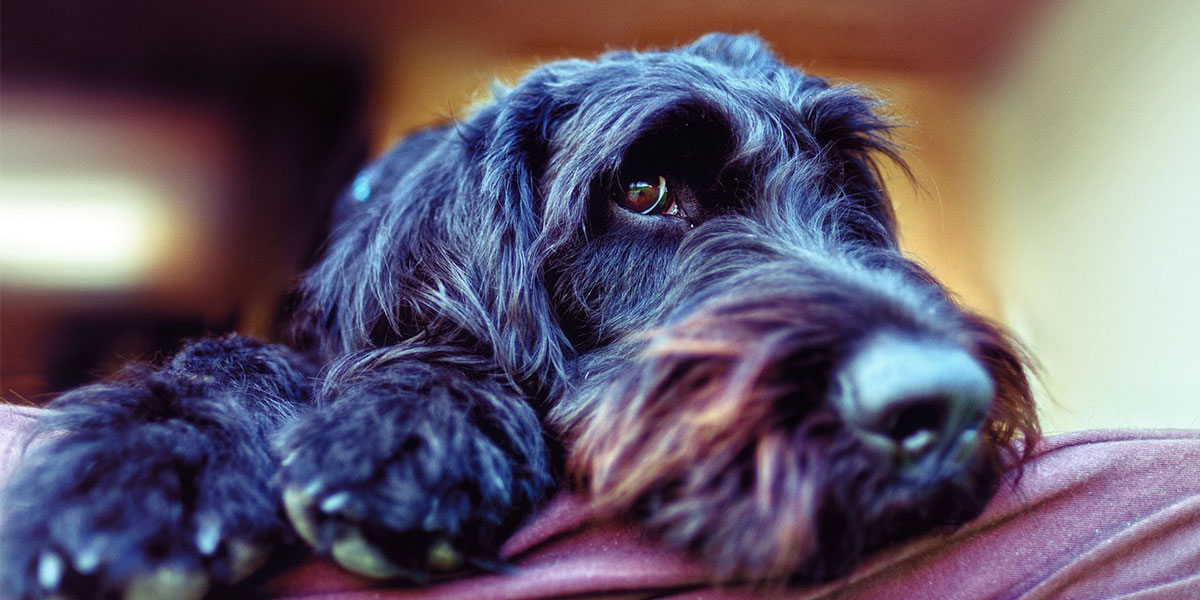Taking too long? Close loading screen.

January 29th
Worried that your current dog(s) will have trouble adjusting to your new Doodle pup?
If that’s the case, then you’re in the right place. Having a healthy family with dogs of all ages can be a great experience, but there are a few tips you need to carefully follow as you try and introduce them.
Thankfully, if you’ve used our puppy finder to put you in touch with an ethical, loving breeder—then you should already have one of the finest Doodles available. That means it should be a wonderful addition to your household and pet family, even if you’ve already got an older dog.
It’s understandable that a dog who’s had the run of the house for years might need a bit of an adjustment period when a new pup arrives. They might feel a bit territorial, might not like how excitable this young thing is, or they might simply feel like they’ve lost a bit of attention. These are all natural reactions for any established pet, but they’re also things you can fix.
When you get your dogs living happily alongside each other, it’ll be a huge boost to your family and well-being. Having two or more happy dogs in the same family is such a wonderful feeling, and it’s one you could be experiencing real soon.
So, how do you get an old dog to live happily alongside your new pup?
You don’t want to jump in and start solving a problem that isn’t there, so don’t assume that your old dog is going to have any issues getting used to your new pup.
While it is rare for there to be no issues at all, some old dogs will absolutely love having a new companion and playmate right from the start. So let your established pet lead the interactions to start with and gauge their reactions. If things are going well, you might not need to do much at all.
Assess how these early interactions go carefully. If your old dog is acting aggressively, you will need to make changes. There’s another thing you need to look for, too. Some dogs won’t act aggressively, they’ll actually go into their shell and start being shy. You need to fix this as well, as it isn’t normal behavior.
You should have a few clues as to how your old dog will behave with a new pup based on its reaction to other dogs in your neighborhood, especially when you take it out on walks.
Does it often get into scraps with other dogs and act super-aggressively? Or is it generally well-mannered and happy to be around dogs it doesn’t know very well? This could have implications to how easy it is to introduce a new pup to the family.
Since your older dog will probably be bigger and stronger than your young pup, you’ll also want to look out for your new pup’s own safety. If your young dog is super-excitable and wanting to play all the time while your old dog is a bit more mellow, this could cause a few issues—especially if your old isn’t really in a playing mood.
While your older dog might have been obedient and mellow to you for a number of years, the animal world states that it will probably still need to assert its dominance over a new, younger dog.
That means it might want to show everyone who’s still boss. You should keep both dogs on leashes when you first introduce them to each other. You might want to keep doing this for a while until both pets have settled down a bit and got used to being around one another.
Don’t leave your two dogs alone until they’ve had lots of supervised time together and have already got used to the sights, sounds and especially smells of the other animal.
This works a bit like introducing a pet to a young member of your family, but you might want to keep them separate for a while. This can be achieved with crates and playpens.
It should always be your new pup that’s kept in the smaller area. Not only should they actually be smaller, but you don’t want your established pet to think it has lost out or is having its freedom taken away. This should also let your new pup get used to respecting the space your older dog has already established for itself.
Smell is hugely important in the animal world, and especially with dogs. Before you introduce your pets to each other face-to-face, you should start getting them used to their smell.
Try rubbing a blanket or towel on one dog and then giving it to the other. Then do the same to your other dog. This is a great way of getting them introduced before you actually introduce them. If you get them adjusted to the other dog’s smell for a few days, they should already feel more bonded to each other before they actually meet.
Once you’ve socialized your dogs with each other, you can start enjoying all the benefits of a happy multi-dog family for years to come!
Find the Perfect Puppy